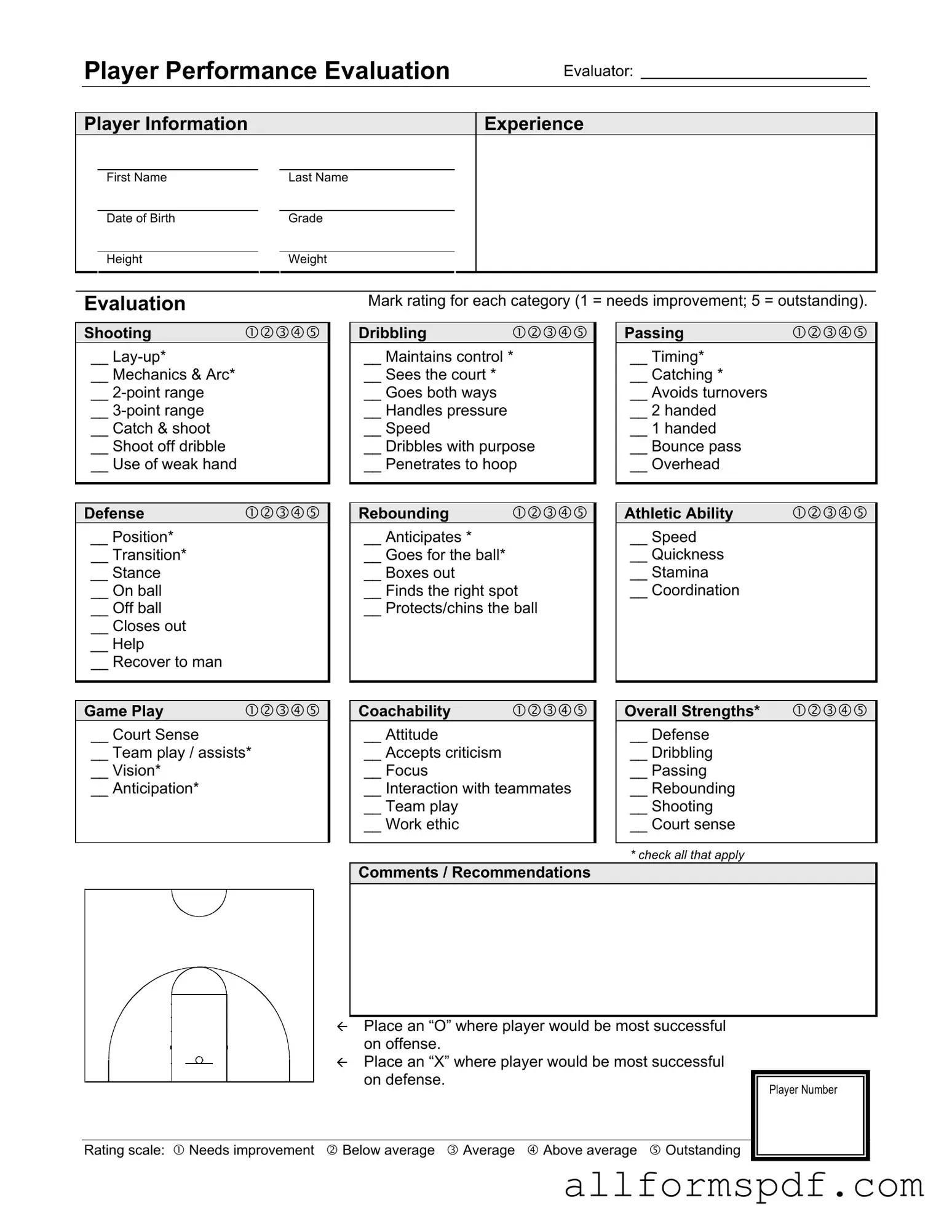Fill Out Your Basketball Evaluation Form
The Basketball Evaluation Form is a comprehensive tool designed to assess a player's skills and performance in various aspects of the game. This form provides evaluators with a structured way to rate players on their shooting, defense, dribbling, passing, athletic ability, and overall game play. By utilizing this form, coaches can identify strengths and areas for improvement, ultimately guiding players in their development.
Create My Basketball Evaluation Now
